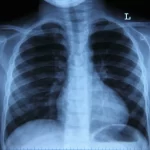Use of Asbestos in Michigan Schools
Asbestos was once used extensively in manufacturing and construction due to its heat-resistant properties, tensile strength, and easy availability. As a result, many older buildings could still potentially contain asbestos in some way. Unfortunately, this also includes many presently active school buildings. But does the presence of asbestos in the architecture of schools still pose a danger to teachers, staff, and students? To better understand this hazard, let’s explore the applications and dangers of asbestos’ presence in schools.
In America, asbestos-containing products were used in the construction of schools up until the early 1970s. As we discovered more information on the carcinogenic properties of asbestos, the public began to push for legal reform to protect their children and school staff from exposure. As a result, a series of laws were enacted that required school authorities to perform thorough inspections for asbestos-containing materials. They were also required to develop management plans to mitigate the potential hazards associated with asbestos in Michigan schools. The management plans would cover how to perform maintenance on asbestos-containing products safely, dispose of any asbestos-containing items safely, and prevent wear or damage to the materials.
However, before these laws were in place, a surprising amount of architecture and furnishings in schools were constructed using asbestos. Here are a few examples:
- Wall insulation
- Pipe insulation
- Duct insulation
- Playground areas
- Ceiling tiles
- Cement sheeting
- Flooring
- Plaster
- Chalkboard backing
- Fireproofing
- Textured paints
- Adhesives
- Wallboard
- Coatings
- Roof shingles
- Lab counters
- Theater fire curtains
It is hard to say how many of these products are still in use, so it’s always good to exercise caution when interacting with broken or damaged items and areas in older school buildings.
How to Spot Hazards of Asbestos in Michigan Schools
While many asbestos sources were safely removed from school buildings under the new safety regulations, other asbestos products possibly still exist. This can be for various reasons, such as a lack of safe removal methods or having very low exposure risk. However, exposure can happen due to accidental damage to structures, building wear over time, remodeling, renovations, etc., so it’s best to know how to identify a hazard. Here are a few specific sources in which you may encounter asbestos exposure:
- Broken wallboard or drywall
- Shiny, grayish-green or bluish-black rock in playground areas
- Exposed wall insulation
- Desiccated pipe insulation
- Damaged ceiling tiles
- Crumbling plaster or soundproofing
- Increased Mesothelioma Risk for Teachers
Despite laws in place that prevent the exposure of asbestos in Michigan schools, the hazard is still there. This is because the statutes enforced only the safe removal of asbestos-containing materials, with management plans for all other materials that could not be safely removed. But as it goes, no amount of asbestos exposure is a safe amount. We do not have a way of successfully expelling the microscopic asbestos fibers from our bodies once they are in place. As a result, teachers are at much higher risk for developing mesothelioma—an incurable lifelong condition of the lung lining caused by asbestos—than most. Those who work in buildings that contain asbestos in Michigan schools always have a greater chance of exposure due to necessary remodeling, accidental damages, general wear and tear, and poor maintenance management.
Exposure of Asbestos in Michigan Schools
In 1984, Serling & Abramson, P.C., including our Of Counsel attorney, Phil Goodman, partnered with various Michigan law firms to serve on the board of attorneys on a class action involving asbestos usage in schools. The lawsuit was on behalf of Michigan public and private schools to recoup property damage costs against the manufacturers and distributors of asbestos-containing materials used originally to construct the school buildings. The asbestos materials included plastering products, fireproofing, pipe insulation, cement, gaskets, boiler insulation, floor tiles, ceiling tiles, and many other products.
The case was filed in the Wayne County Circuit Court located in Detroit and involved 332 Michigan school districts and several private schools. Nearly 2,000 buildings were involved in the case. The lawsuit named more than 50 defendants, most of whom settled with the court’s approval with a plan to distribute settlement proceeds that exceeded over $100,000,000. The result of this lawsuit enabled Michigan schools to remove all dangerous asbestos products from their buildings. Due to the hard work of our Serling & Abramson, P.C. power team, Michigan schools are now much safer for students, teachers, employees, and visitors.
What Can You Do if You’ve Been Exposed to Asbestos
If you or someone you know has been exposed to asbestos in Michigan schools and is now experiencing asbestos-related conditions such as mesothelioma or lung cancer, we can help. Our team at Serling & Abramson, P.C. are experts at asbestos-related litigation and have decades of experience seeking compensation for those harmed due to exposure.
















